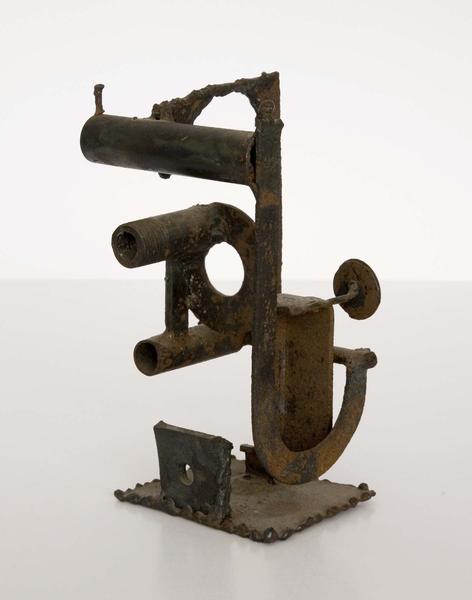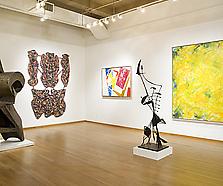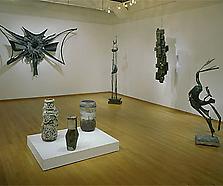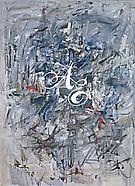“Everything has a life. In my past the necessities of our living and the conditions of the society of people have sent me out to be alone – out to the country, on the sea. One can be as lonely as one wishes, but it is impossible to be alone…even on the salt and sterile sea, wait for the calm and lie over the low rail to stare down into the blue glass water and what at first seems a pure medium begins to dance with motes, darting specks, and down at the threshold of the dark, ominous shadows turn and careen about…it is unbearable to conceive that anything cannot have life.” *
An emerging artist during the peak years of abstract expressionism, Richard Stankiewicz brought a sense of humor and lightness to the large, heavy sculptures he constructed from found scraps of metal. Born in Philadelphia in 1922, Stankiewicz lost his father in a railroad accident at the age of two. His mother moved her three children to Detroit, where Stankiewicz grew up in a predominantly German and Polish immigrant community. He attended Cass Technical High School, studying mechanical drafting, volumetric geometry, engineering, art, and music. Despite a scholarship for the Cranbrook Academy of Art, Stankiewicz could not afford college, and in 1941, he joined the US Navy. Discharged in 1947, he eventually made his way to New York City and then to Europe where in 1950, he was able to use funding from the GI Bill to study painting at Atelier Fernand Léger and sculpture with Ossip Zadkine.
In 1952, Stankiewicz became a member of Hansa Gallery, a cooperative gallery founded by former students of Hans Hofmann, including Jan Müller, Jean Follet, and Wolf Kahn. Throughout the 1950s, he supported himself as a freelance draftsman while experimenting with various materials for sculpture. He created a series of insects sculpted from wire that were shown at Hansa in 1953, and that same year, he exhibited his welded steel sculptures which were hailed by Fairfield Porter as evidence that “life is stronger than the machine.”† A strong supporter of Stankiewicz’s work, Porter also wrote an article, “Stankiewicz Makes a Sculpture,” for the September 1955 issue of ARTNews. For the remainder of the decade, Stankiewicz’s work was increasingly well received, and he participated in numerous group and solo shows, including Young America 1957 at the Whitney Museum of American Art, Irons in the Fire at the Contemporary Arts Museum in Houston (1957), the Venice Biennale (1958), and a one-man exhibition at the Stable Gallery in 1959.







